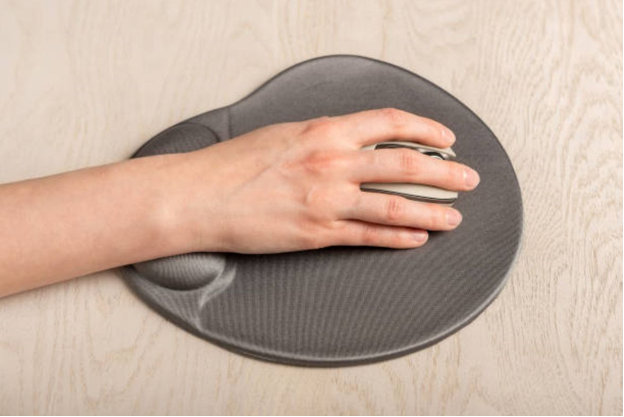Choosing the Best Ergonomic Wrist Rest for Office Use
In today’s fast-paced world, where many of us spend countless hours at our desks, finding ways to improve our comfort and productivity is essential. One often overlooked but critical aspect of office ergonomics is the humble wrist rest. The right ergonomic wrist rest can make a significant difference in your overall comfort and health, reducing the risk of repetitive strain injuries and enhancing your typing experience. In this blog post, we’ll explore how to choose the best ergonomic wrist rest for office use, focusing on key features, benefits, and some of the top options available.
Understanding the Importance of Ergonomic Wrist Rests
Before diving into the specifics of what to look for in an ergonomic wrist rest, it’s essential to understand why they are so important. Wrist rests are designed to support your wrists in a neutral position while typing or using a mouse. This support helps reduce the strain on your wrist tendons and nerves, minimizing the risk of developing conditions such as carpal tunnel syndrome or tendonitis. A well-designed wrist rest can also improve your typing posture, leading to better overall ergonomics and comfort.
Key Features to Look for in an Ergonomic Wrist Rest
When choosing an ergonomic wrist rest for your office setup, several features can significantly impact your comfort and productivity. Here are the key factors to consider:
1. Material
The material of the wrist rest plays a crucial role in its comfort and durability. Common materials include:
- Gel: Gel wrist rests are popular for their softness and ability to conform to the shape of your wrists. They provide excellent support and can be very comfortable, especially for extended typing sessions.
- Memory Foam: Memory foam wrist rests offer similar benefits to gel but tend to be firmer. They provide good support and can be more durable over time.
- Fabric: Fabric-covered wrist rests can be soft and comfortable but may not provide as much support as gel or memory foam options. They are usually more breathable, which can be a plus in warmer environments.
- Leather: Leather wrist rests can offer a more premium feel and are often more durable. However, they may not provide as much cushioning as other materials.
2. Size and Shape
The size and shape of the wrist rest should match your keyboard or mouse setup. Some wrist rests are designed specifically for use with keyboards, while others are tailored for mice.
- Keyboard Wrist Rests: These are typically long and narrow, designed to span the length of your keyboard. They should be high enough to keep your wrists in line with the keys but not so high that they cause your wrists to bend upwards.
- Mouse Wrist Rests: These are usually smaller and can be placed next to your mouse. They should provide enough support to keep your wrist in a neutral position while using the mouse.
3. Non-Slip Base
A non-slip base is essential to keep the wrist rest in place during use. This feature ensures that the wrist rest doesn’t move around on your desk, which can be distracting and reduce its effectiveness.
4. Ease of Cleaning
Since wrist rests come into direct contact with your skin, they can accumulate dirt and oils over time. Look for wrist rests with removable and washable covers or materials that are easy to wipe clean.
5. Firmness
The firmness of the wrist rest can affect your comfort and support. Some people prefer softer wrist rests that provide more cushioning, while others might find firmer wrist rests more supportive. Consider your personal preferences and any existing wrist issues when choosing the firmness.
Benefits of Using an Ergonomic Wrist Rest
Integrating an ergonomic wrist rest into your office setup can provide numerous benefits. Here’s how using a wrist rest can enhance your work environment:
1. Improved Comfort
A good wrist rest provides support and cushioning, reducing the pressure on your wrists. This can help you maintain a more comfortable typing position, especially during long work sessions.
2. Reduced Risk of Injuries
By keeping your wrists in a neutral position, a wrist rest helps minimize the strain on your tendons and nerves. This can lower the risk of developing repetitive strain injuries like carpal tunnel syndrome.
3. Enhanced Typing Posture
Wrist rests encourage better typing posture by aligning your wrists with your keyboard. This alignment can help prevent hunching or awkward hand positions, leading to better overall ergonomics.
4. Increased Productivity
Comfortable and supported wrists can enhance your typing speed and accuracy. When you’re not distracted by discomfort or pain, you can focus more effectively on your work.
5. Versatility
Many ergonomic wrist rests are versatile and can be used with different devices, including keyboards, mice, and even laptops. This flexibility makes them a valuable addition to any office setup.
How to Use Your Ergonomic Wrist Rest Effectively
Choosing the right ergonomic wrist rest is only part of the equation. To get the most benefit, it’s important to use your wrist rest correctly. Here are some tips to maximize its effectiveness:
1. Positioning
Place the wrist rest directly in front of your keyboard or mouse, ensuring that it supports your wrists without elevating them too much. Your wrists should remain in a neutral position, with your hands hovering slightly above the keyboard or mouse.
2. Avoid Pressure Points
Ensure that the wrist rest does not put pressure on the carpal tunnel area of your wrist. The support should be under your palm and the base of your wrists, not directly under your wrist joint.
3. Take Breaks
Even with a wrist rest, it’s important to take regular breaks to stretch and move your hands and wrists. This helps prevent stiffness and reduces the risk of repetitive strain injuries.
4. Adjust as Needed
If you find that the wrist rest is not providing enough support or is causing discomfort, don’t hesitate to adjust its position or try a different type. Personal comfort is key to effective ergonomics.
Final Thoughts: Choosing the Best Ergonomic Wrist Rest
Selecting the best ergonomic wrist rest for your office use involves considering various factors such as material, size, shape, and firmness. The right wrist rest can significantly enhance your typing comfort and reduce the risk of injury. Remember to evaluate your specific needs and preferences when choosing an ergonomic wrist rest. With the right support, you can improve your overall productivity and enjoy a more comfortable work environment.
Whether you’re a professional who spends long hours at the computer or someone who values comfort in their workspace, investing in a high-quality ergonomic wrist rest is a decision that pays off. It’s a small addition to your office setup that can have a big impact on your well-being and efficiency. So take the time to explore your options and find the best ergonomic wrist rest for your needs. Your wrists will thank you!
By following these guidelines and recommendations, you can choose the best ergonomic wrist rest to enhance your office experience. With the right ergonomic wrist rest, you’ll enjoy greater comfort, improved productivity, and a healthier workspace overall.



